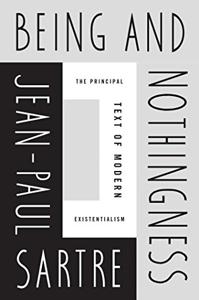
Want to learn the ideas in Being And Nothingness better than ever? Read the world’s #1 book summary of Being And Nothingness by Jean-Paul Sartre here.
Read a brief 1-Page Summary or watch video summaries curated by our expert team. Note: this book guide is not affiliated with or endorsed by the publisher or author, and we always encourage you to purchase and read the full book.
Video Summaries of Being And Nothingness
We’ve scoured the Internet for the very best videos on Being And Nothingness, from high-quality videos summaries to interviews or commentary by Jean-Paul Sartre.
1-Page Summary of Being And Nothingness
Overall Summary
Jean-Paul Sartre’s philosophical work “Being and Nothingness” argues that an individual’s existence precedes his essence, which comes from the ontological bedrock of the former. He was influenced by Martin Heidegger’s book “Being and Time”, but he disagreed with it. In this book, he says that people construct themselves through aspiring to emulate their models of being.
Sartre starts off the passage by saying that he will talk about consciousness and how it comes to be. He critiques phenomenologists, such as Husserl and Heidegger, because they are too focused on empiricism. However, there is a recent movement in philosophy that rejects dualism by focusing more on what we can actually experience. We can’t just say things exist without showing how we know this.
Sartre’s first argument is on the “origin of negation.” Nothingness can be considered a concept that exists in relation to some extant whole. For example, if someone were blind, they would have no sight. But this blindness is essential to who they are and helps define them as a person. Sartre argues that nothingness cannot exist independently from an existing whole because it must be thought into existence by the mind.
Next, Sartre talks about how people deceive themselves. People can either choose to believe something that is not true or they can objectify themselves by thinking of their attributes as objects. Both are ways of deceiving the self and prevent people from transcending situations.
Sartre also emphasizes the importance of using negation to admit oneself in what he calls the “great human stream.” He explains that we must use self-deception to be able to exist and function in society. We need a balance between being real and living a lie, but modern ethics threatens this balance by setting clear terms for how we should think and behave.
In the final section, Sartre addresses sensory processes. He argues that these processes are non-positional, meaning they define one as an object and not a subject. Using the example of mannequins, he says that when someone mistakes a mannequin for human, he briefly perceives himself as an object whose world is haunted by people’s values. Once he realizes it’s just a mannequin, he returns to being a subject who understands his own values more clearly than before. In sex this happens too—one person thinks about how much she wants another person to want him or her; however, it can never happen in reality because at the moment of orgasm all those thoughts disappear and one feels like an object again.
Sartre concludes by saying that consciousness cannot exist on its own. It needs to be aware of objects in order to exist, a state called intentionality. This means that being conscious of anything is dependent upon being conscious of oneself. He says that the self does not have an ego, but rather exists as a relationship between objectifying the self and total existence (or being) of the self. Sartre’s existentialist project can therefore be summed up as follows: Being is distinct from existing for oneself or being free.






